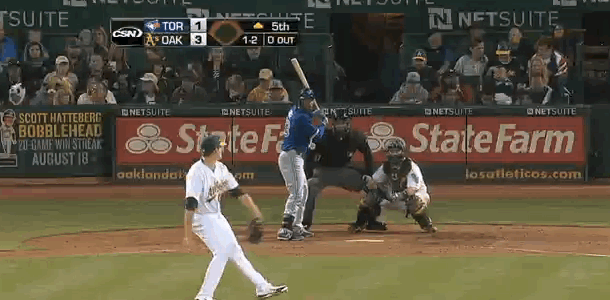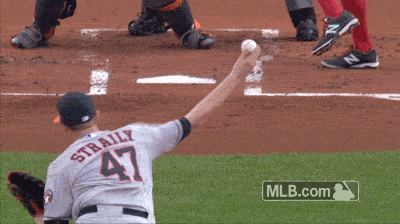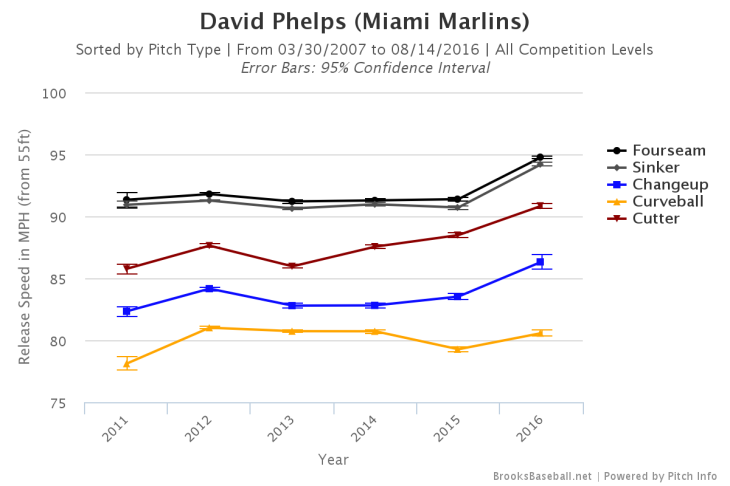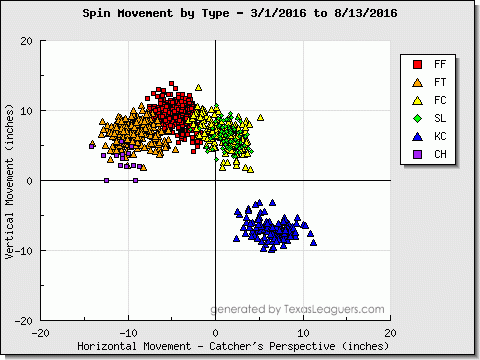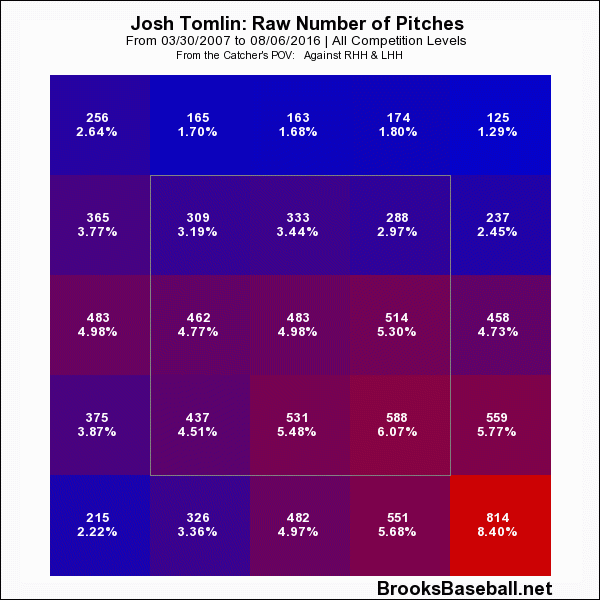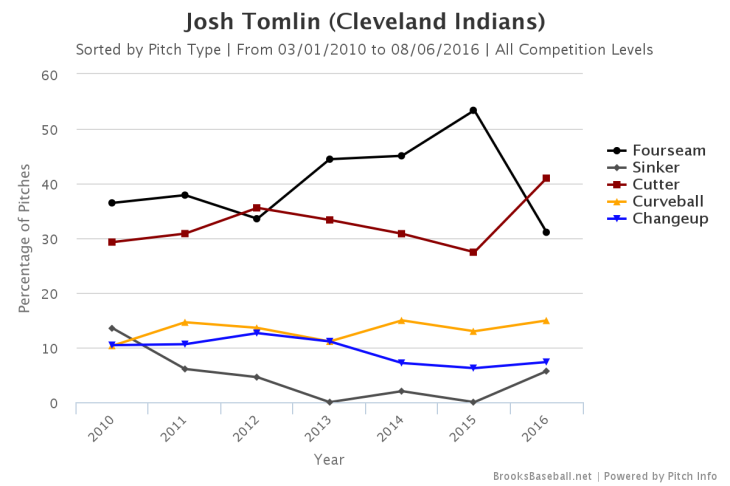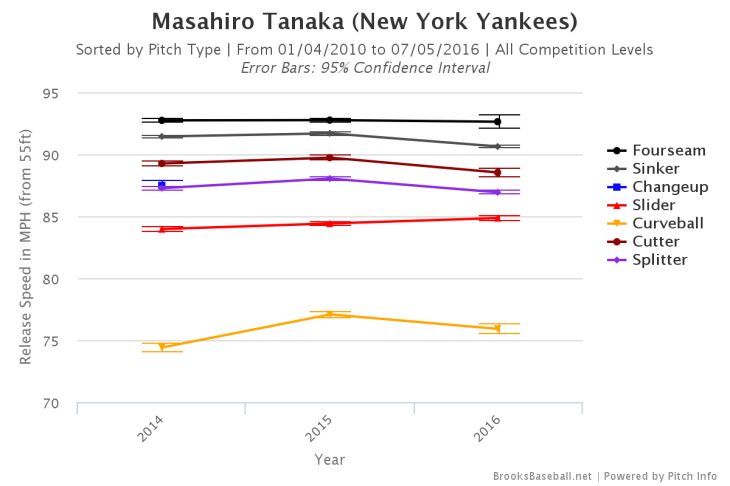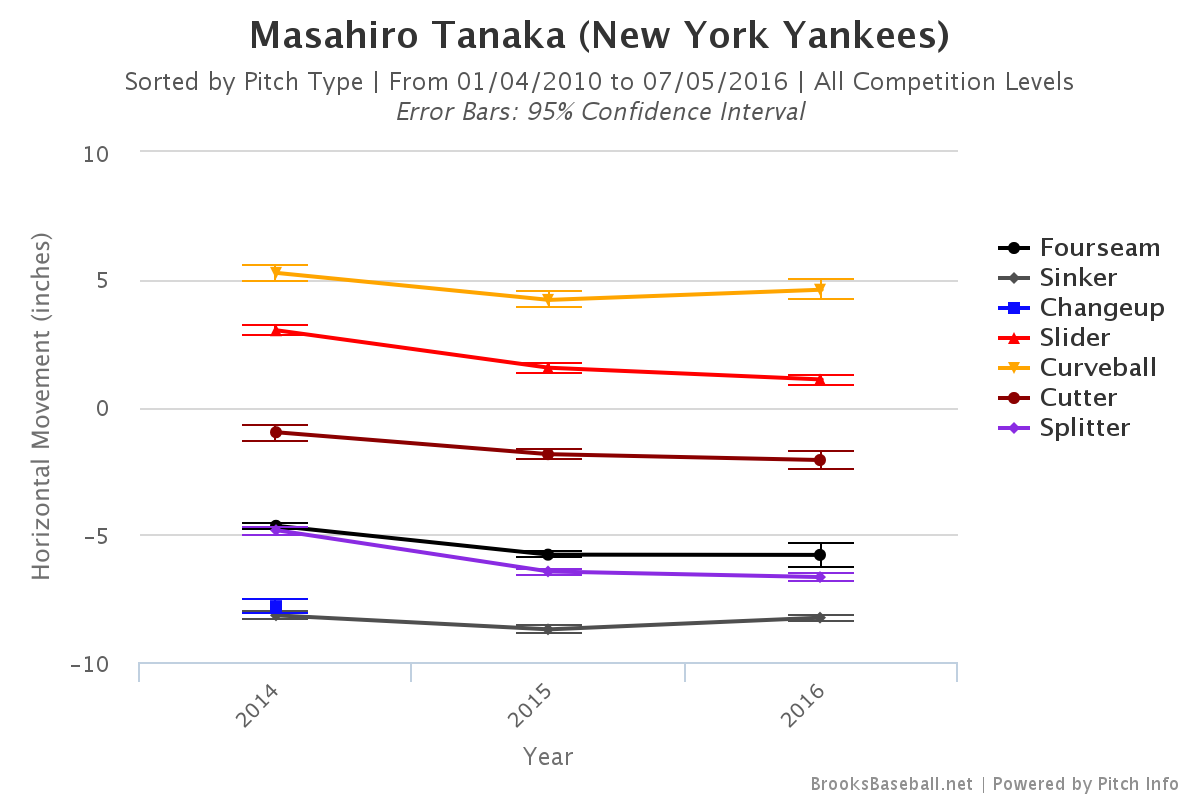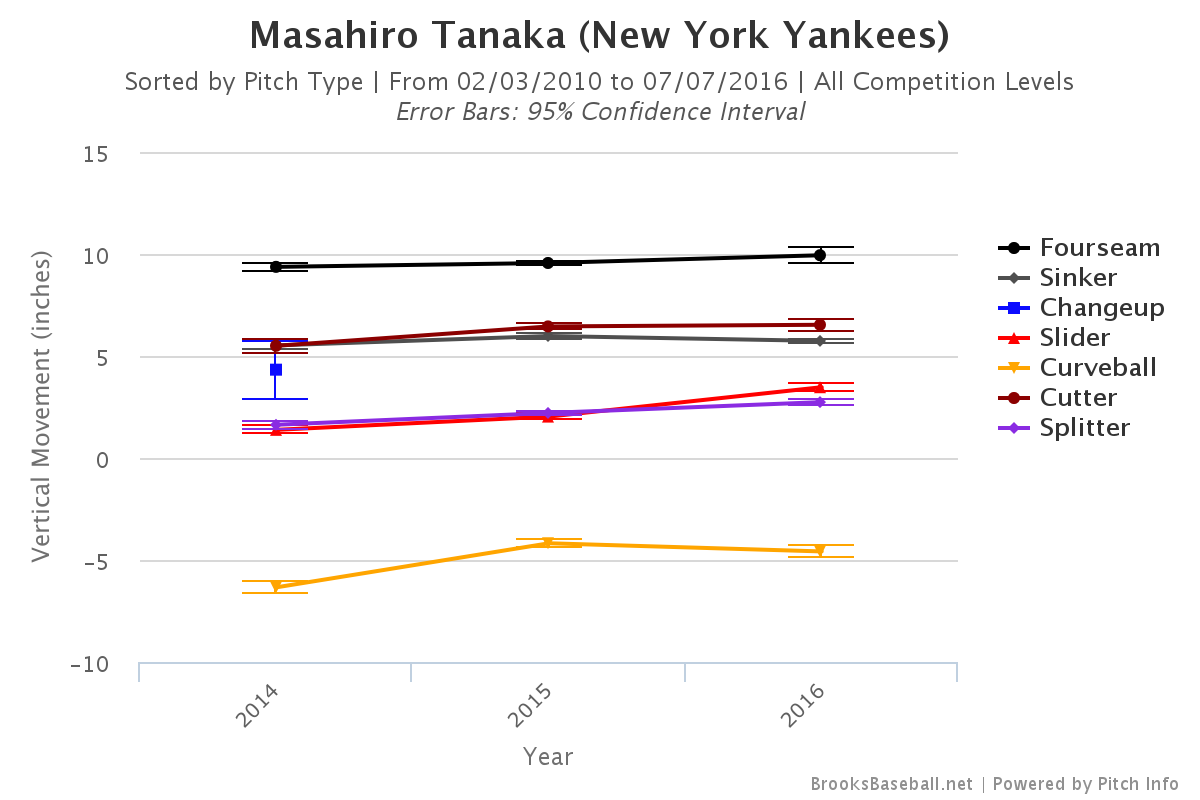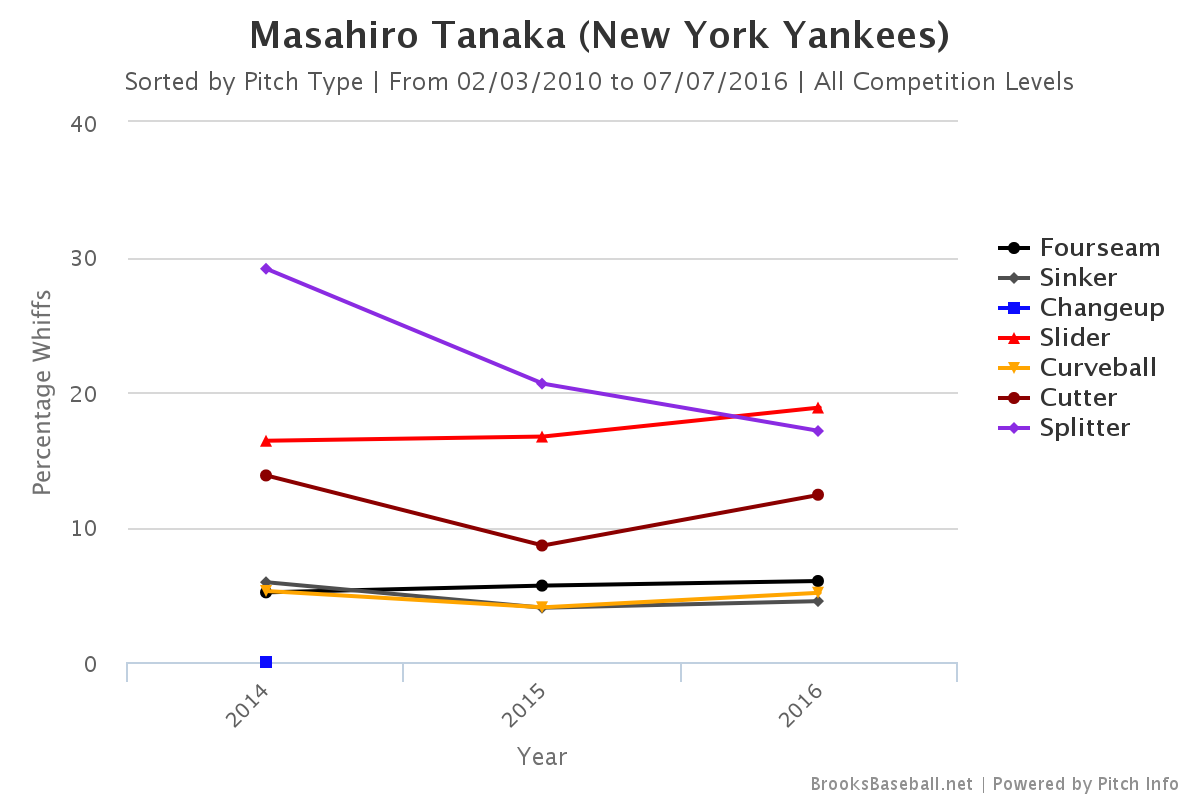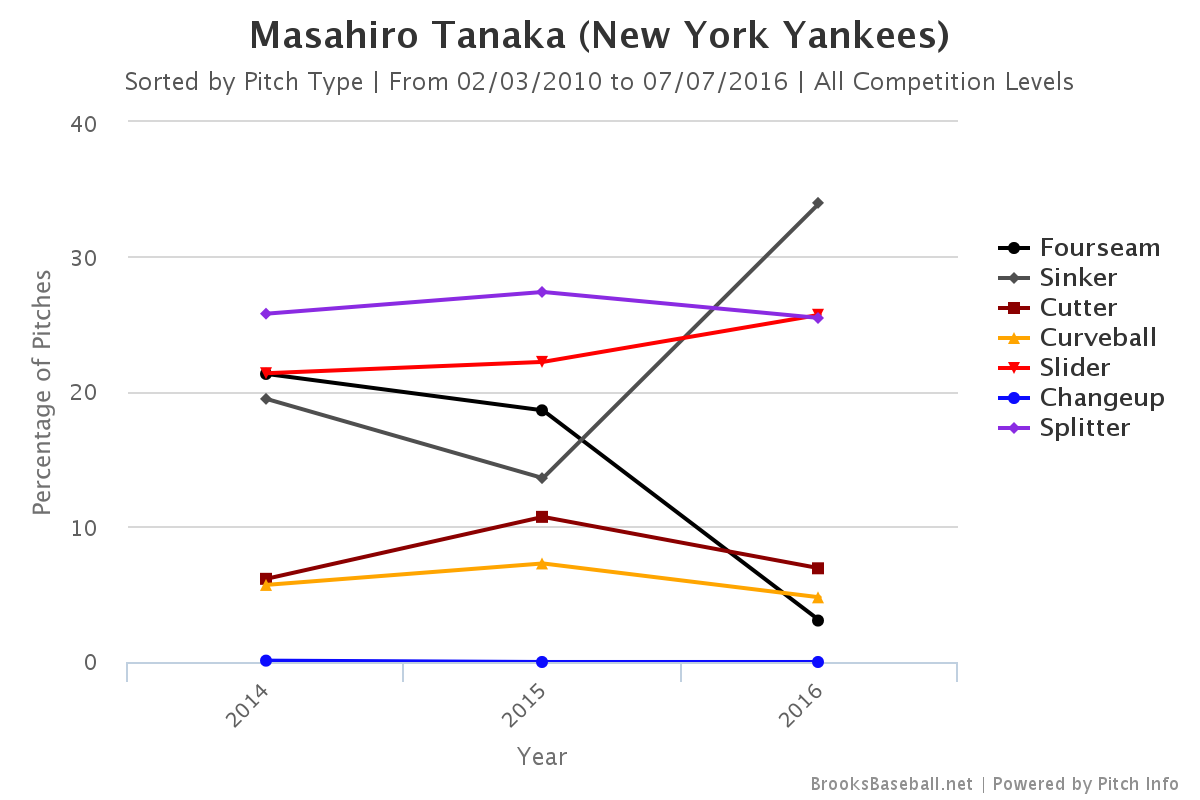Chad Kuhl Is Throwing Heat
Note: stats are as of morning June 27th.
Generally speaking, a slash line (ERA/FIP/xFIP/SIERA) of 5.58/4.28/4.77/4.80 isn’t very encouraging. These are the numbers that Pirates starter Chad Kuhl has put up to date this season through 69.1 innings. Last year, he threw 70.2 MLB innings, so we have comparable sample sizes. Yet, he seemingly hasn’t improved upon last year’s numbers. Yes, the strikeouts are up, from a 17.6% K-rate to a 19% this year. However, the walk rate is also up (6.6% to 9%), the ground balls are down (44.3% to 41.8%), and the home-run rate has risen accordingly (0.89 HR/9 to 1.04). What, you may be wondering, do I see in this guy?
Check out his plate discipline stats.
| Season | O-Swing% | Z-Swing% | Swing% | O-Contact% |
| 2016 | 26.40% | 68.80% | 45.00% | 65.70% |
| 2017 | 30.50% | 65.90% | 46.40% | 57.40% |
| Season | Z-Contact% | Contact% | Zone% | F-Strike% | SwStr% |
| 2016 | 87.50% | 80.30% | 43.90% | 57.10% | 8.90% |
| 2017 | 85.30% | 75.20% | 45.00% | 59.40% | 11.40% |
Improvements across the board. His chase rate has gone up while his in-zone swing rate has gone down. Hitters are making far less contact on pitches out of the zone, and even a bit less on pitches within the zone. This explains the increase in strikeouts. The walks shouldn’t be increasing, unless hitters are really going much deeper into counts, since they are making less contact. Nonetheless, this should change if Kuhl keeps things the same, because he’s throwing in the zone more often and getting more swings outside of the zone. Of the 118 pitchers who have thrown at least 60 innings this year, Kuhl’s chase rate ranks 43rd, his in-zone swing rate is tied for 48th lowest, his Z-Swing minus O-Swing ranks 37th, and most impressive, his swinging-strike rate is tied for 26th. In fact, his swinging-strike rate is the same as Yu Darvish — he even has a higher chase rate than him (30.5% and 29.3%), and Darvish has a superb 26.9% strikeout rate. The underlying statistics are optimistic, so if Kuhl keeps pitching this way, the strikeouts will increase and the walks will decrease. The bigger question is, what is the driving force behind these improvements?
According to PITCHf/x data on FanGraphs, Kuhl’s average four-seam fastball velocity has jumped from 93 last year to 95.5 this year, touching 99. Contrary to what his name might suggest, Chad Kuhl is throwing heat. In fact, all of his pitches have seen an increase in velocity (and he’s added a curveball, but he’s only thrown 38 of them and they have been largely ineffective):
| Season | Pitch | minVel | maxVel | Vel |
| 2016 | SI | 83.3 | 96.5 | 92.7 |
| 2016 | SL | 81.6 | 89.5 | 86.6 |
| 2016 | FA | 87.4 | 96.1 | 93 |
| 2016 | CH | 81.6 | 88.3 | 85.1 |
| 2017 | SI | 88.6 | 99.5 | 94.1 |
| 2017 | FA | 90.2 | 99.4 | 95.5 |
| 2017 | SL | 77.2 | 91.8 | 88.5 |
| 2017 | CH | 81.7 | 90.7 | 88 |
| 2017 | CU | 79.7 | 86.4 | 82.7 |
The velocity increase has given Kuhl more confidence in his four-seamer, and his usage of the pitch has risen to 29% this year, up from a mere 10% last year. This explains part of why the ground-ball rate is dropping — the uptick in four-seamer usage has caused a drop in sinker usage (down from 57% last year to 37% this year).
In addition, while his sinker has seen an increase in arm-side run (1.6 inches more), the ground-ball rate is also dropping because the sinker has seen a decrease in drop (1.1 inches less). While the drop on his sinker has decreased, the rise on his four-seamer has increased. It is now above average, ranking 52nd out of the 118 pitchers who have thrown at least 60 innings as of morning June 27th. This is in part due to a slight change in vertical release point:

This year, Kuhl is throwing more over the top with all of his pitches. This graph shows that, for his sinker, he is on average releasing the ball about two inches higher. Now, Pitch Info (which powers this graph) says that Kuhl doesn’t throw a four-seamer at all, only sinkers, as opposed to PITCHf/x. Either way, at this point, Kuhl’s “sinkers” don’t sink very much. Using Pitch Info’s data, Kuhl’s sinker has the eighth-worst drop among the 87 starters who have thrown at least 200 sinkers this year. In that same group, the ground-ball rate on Kuhl’s sinker is also eighth-worst. Coincidence? I think not. His overall ground-ball rate of 41.8% this year is below average, ranking 78th-lowest of the 118 pitchers who have thrown at least 60 innings this year.
All of his pitches are generating more whiffs, looking at both Pitch Info and PITCHf/x. This is probably due to the improved velocity. Using Pitch Info’s data, his slider ranks 15th in whiffs per swing out of the 87 starters who have thrown 100 sliders this year (not to mention, it ranks 10th in average velocity), and his sinker ranks 17th out of the 87 starters who have thrown 200 sinkers this year. However, his changeup still gets whiffs at a below-average rate: it ranks 71st out of the 92 starters who have thrown 100 changeups this year. Although the changeup has gotten more run this year, it too has lost vertical drop and the velocity gap between it and the fastball has closed a bit. Generally, changeups are used to sit down batters of the opposite handedness, because they have arm-side run. Kuhl, a righty, has struggled against lefties this year, as they have a .445 wOBA against him, while righties have a mere .286 wOBA. At the same time though, he has gotten more strikeouts against lefties (30) than righties (29), despite having faced fewer lefties (147) than righties (163). Also, I’m not too worried that Kuhl will have struggles against lefties in the long run because his sinker has great arm-side run.
The fact that Kuhl has a diminished ability to get ground balls doesn’t bode well for his old skill set, where he relied on his control and inducing weak contact, but with an increased penchant for strikeouts, backed by improving velocity, it shouldn’t matter that much. I would still take a flyer on him; the strikeouts, walks, and platoon splits should improve, along with his ERA.
Data from FanGraphs, Brooks Baseball, and Baseball Prospectus. Picture from MLB.com. Thanks for reading!

